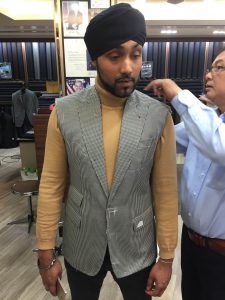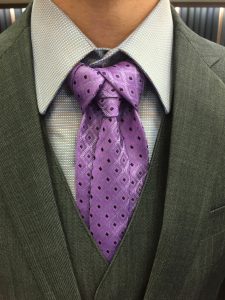Suits are a time-honored convention of menswear. Short of jackhammers and beer, they’re the ultimate expression of masculinity and simply have the ability to make every man look dapper and suave. Once upon a time in ancient Persia, merchants were like today’s executives and had to be the best-dressed to symbolize their affluence and wealth. Fashion has come a long way – today we have the power suit. From the history of tailoring to Mark Twain’s legendary attire, here are 10 interesting facts about suits that you’ve probably never heard of.
1. The Birth of The Modern Suit
Like monocles and bowler hats, the Victorian era was also responsible for the birth of the modern suit. The first look that was popular in the 19th century was the three-piece suit accompanied by a matching waistcoat, vest and contrasting trousers.
2. Who Invented It?
The suits that we know and love today were invented by Beau Brummell, a graduate of the elitist English college Eton. He loathed the decorative court dresses and frocks that men wore and gave them a more sophisticated line of wear.
3. Where Vents Came From
Think that side vents are simply an aesthetic feature of suits? While the Victorian men we mentioned earlier were feeling pretty good about themselves in their new clothes, they realized they had a problem when they got on their horses; the jackets would just hang over the poor animals’ tails. Thus, the side vent was invented and each side of the jacket would drape comfortably on either side of a horse.
4. The Man in the White Suit
Mark Twain gave us Huck Finn, Tom Sawyer and the handlebar moustache. At a Congressional hearing on copyright in 1906, Twain shocked the attendees when he showed up dressed from head to toe in a white linen suit. He did this to not conform to the somber black suits men wore at the time and for hygiene purposes – he never did elaborate on the hygienic bit.
5. Be Spoken For
Your suit is worth a thousand words. If you’re into menswear at all, you’d know that Savile Row is the Mecca for men’s suiting. Known as ‘the golden mile of tailoring’, shops in Savile Row opened in 1846 and have tailored for a client list which includes Prince Charles, Winston Churchill, Muhammad Ali, Laurence Olivier and Napoleon the 3rd. It was during this time that the term ‘bespoke’ came about when tailors boasted that suits would make their clients ‘be spoken for’.

6. Casual Fridays in Japan
Can’t wait for casual Friday in the office? It might be time to ditch your work clothes and go Zentai. The Japanese are responsible for the one-piece suit because Zentai is a tradition where professionals and office workers rebelled against the pressures of modern life by wearing sartorial full body suits made of Lycra.
7. Suits Looking For Men
According to a soon-to-be published survey on AskMen, 64% of the men in the world don’t own a single suit. We’re wondering what these men wear to funerals, weddings and job interviews. It’s a shame because according to a Vogue survey, 40% of women reckon that men look best in suits.
8. Pocket Squares Used to Be Useful
Handkerchiefs were first used in the 14th century to blow noses, dry hands and to surrender to the enemy if a white flag wasn’t handy. These white squares were carried in breast pockets up until the invention of the modern tissue. Since then, ‘pocket squares’ have used finer fabrics and have become an accessory for the dapper man rather than a necessity.
9. Follow Suite
The word ‘suit’ derives from the French word suite which means ‘following’ in English. What’s this got to do with suits as we know and love them? They were called this because wearing a suit in the early 19th century was essentially ‘following’ the popular trend at the time.
10. Neck Ties were Invented in Croatia
Neck ties were invented in Croatia and were known as cravats (derived from Croatia). Till today, the neck tie is the most popular father’s day gift in the world. Another bonus fact: a person who loves to collect and hoard neckties is called a grabologist.

You can now show off your suits know-how with aplomb. Impress the French with your new vocabulary and amaze avid readers with your insight on Mark Twain’s wardrobe. And if you’re one of the 64% who don’t own a suit, stop reading and head to the tailor.
